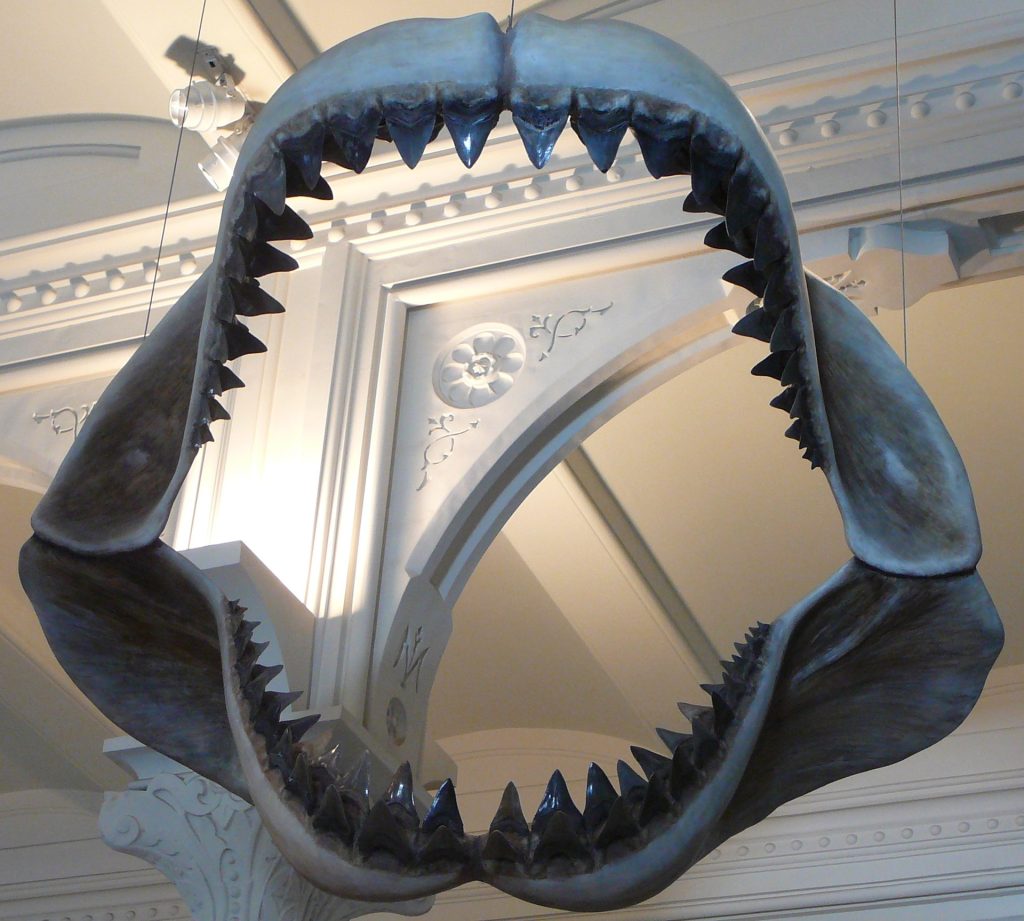In the depths of prehistoric oceans, a formidable predator ruled the waters. Its name alone evokes awe and fascination: the mighty Megalodon. This ancient behemoth, known for its colossal size and fearsome jaws, has captivated the imaginations of scientists and enthusiasts alike. In this comprehensive article, we will embark on a journey to explore the intriguing world of the Megalodon, delving into its origin, physical characteristics, hunting techniques, and ultimate demise. Brace yourself for an enthralling encounter with this legendary creature that once roamed the primordial seas.
Origins and Evolution of the Megalodon

The story of the Megalodon begins over 23 million years ago, during the early Miocene epoch. Derived from the Greek words “megas” (meaning “big”) and “odon” (meaning “tooth”), the Megalodon is aptly named for its massive serrated teeth, which have become iconic symbols of its existence. Belonging to the extinct family of sharks known as Otodontidae, the Megalodon shares evolutionary ancestry with present-day sharks, such as the great white and mako sharks.
Interesting Facts about Megalodon

In this part, we will delve into a list of fascinating facts about the Megalodon, shedding light on its massive teeth, incredible speed, coexistence with other ancient giants, and its impact on paleoecology.
- Enormous Teeth: The Megalodon’s teeth are among the largest and most impressive fossils ever found. These massive teeth, some reaching over 7 inches (18 centimeters) in length, are highly sought after by collectors and enthusiasts worldwide.
- Size Comparison: To truly grasp the size of the Megalodon, imagine standing next to its enormous jaw. The span of its open jaws could accommodate a grown adult easily, showcasing the sheer magnitude of this ancient predator.
- A Global Distribution: Fossilized Megalodon teeth have been discovered in various locations around the world, including North and South America, Europe, Asia, and Australia. This distribution reveals the widespread presence of this mighty creature in ancient oceans.
- Impressive Speed: Despite its massive size, the Megalodon was an incredibly agile swimmer. It could reach speeds of up to 20 miles per hour (32 kilometers per hour), allowing it to swiftly pursue and capture its prey.
- Prehistoric Shark vs. Modern Shark: The Megalodon’s size and power far surpassed that of any modern shark species. Its closest living relative in terms of size is the whale shark, which pales in comparison to the Megalodon’s awe-inspiring dimensions.
- Oceanic Giants: The Megalodon shared its ancient marine habitat with other colossal creatures. It coexisted with prehistoric whales, such as the Basilosaurus, and massive sea turtles, further showcasing the grandeur of the prehistoric oceans.
- Prolific Teeth Shedding: Similar to modern sharks, the Megalodon continuously shed its teeth throughout its lifetime. Fossil evidence indicates that it could have shed thousands of teeth during its existence, leaving behind a treasure trove of fossilized dental relics.
- Paleoecological Significance: The study of the Megalodon’s ecology and its interactions with other marine species provides valuable insights into the paleoecology and dynamics of ancient marine ecosystems. Researchers analyze fossil evidence to unravel the intricate web of life in prehistoric oceans.
Formidable Anatomy and Size of the Megalodon

One of the most awe-inspiring aspects of the Megalodon was its sheer size. Estimates based on fossil evidence suggest that these colossal creatures could reach lengths of up to 60 feet (18 meters) or more, dwarfing even the largest modern sharks. To put this into perspective, the average great white shark reaches a length of about 15 feet (4.6 meters). The Megalodon’s massive size was further accentuated by its robust body, powerful muscles, and an impressive weight that likely exceeded 50 tons.
A Predator of Unparalleled Power

The Megalodon was an apex predator, ruling the ancient seas with unmatched strength and ferocity. Its primary hunting strategy relied on its remarkable speed, agility, and its extraordinary bite force. Equipped with rows of razor-sharp teeth, some measuring over 7 inches (18 centimeters) in length, the Megalodon possessed a jaw-opening span of more than 6 feet (1.8 meters). With such impressive weaponry, it could effortlessly crush the bones of its prey, which included large marine mammals like whales and seals.
A Feast Fit for a Megalodon
The diet of the Megalodon consisted primarily of marine mammals, which roamed the ancient oceans in abundance. Its powerful bite allowed it to tear through the thick blubber and bones of its prey, providing an energy-rich feast. Fossil evidence reveals that the Megalodon consumed a variety of marine creatures, ranging from smaller fish and sea turtles to even gigantic prehistoric whales. This incredible versatility in its diet contributed to the Megalodon’s ability to thrive in diverse oceanic ecosystems.
The Decline and Extinction

While the Megalodon reigned supreme for millions of years, the dawn of the Pliocene epoch marked the beginning of its decline. Various theories propose potential factors that contributed to its demise. Changes in oceanic temperature, alterations in prey availability, and intense competition with evolving whale species are all factors that could have played a role. However, the exact cause of the Megalodon’s extinction remains a subject of scientific debate, with no definitive answer.
Conclusion
In conclusion, the Megalodon stands as a true marvel of the ancient world, leaving behind an indelible legacy. With its colossal size, formidable jaws, and unparalleled hunting prowess, it reigned as the apex predator of prehistoric oceans. As we continue to uncover more about this awe-inspiring creature through fossil records and scientific research, the mystique and fascination surrounding the Megalodon only deepens. Its story serves as a testament to the incredible diversity and grandeur of life that once thrived beneath the waves. So let us marvel at the majesty of the Megalodon, forever engrained in the annals of natural history.



